If you’ve ever sat by a pond on a summer afternoon and watched what looked like tiny fighter jets zipping through the air with military precision, you were probably witnessing one of nature’s most extraordinary aerial predators in action. The Blue Dasher dragonfly doesn’t just fly—it dominates the skies with a success rate that would make any apex predator jealous. These metallic-blue marvels have been perfecting their hunting techniques for over 300 million years, making them living fossils that have outlasted dinosaurs and continue to thrive in modern America’s waterways.
The Stunning Physical Transformation
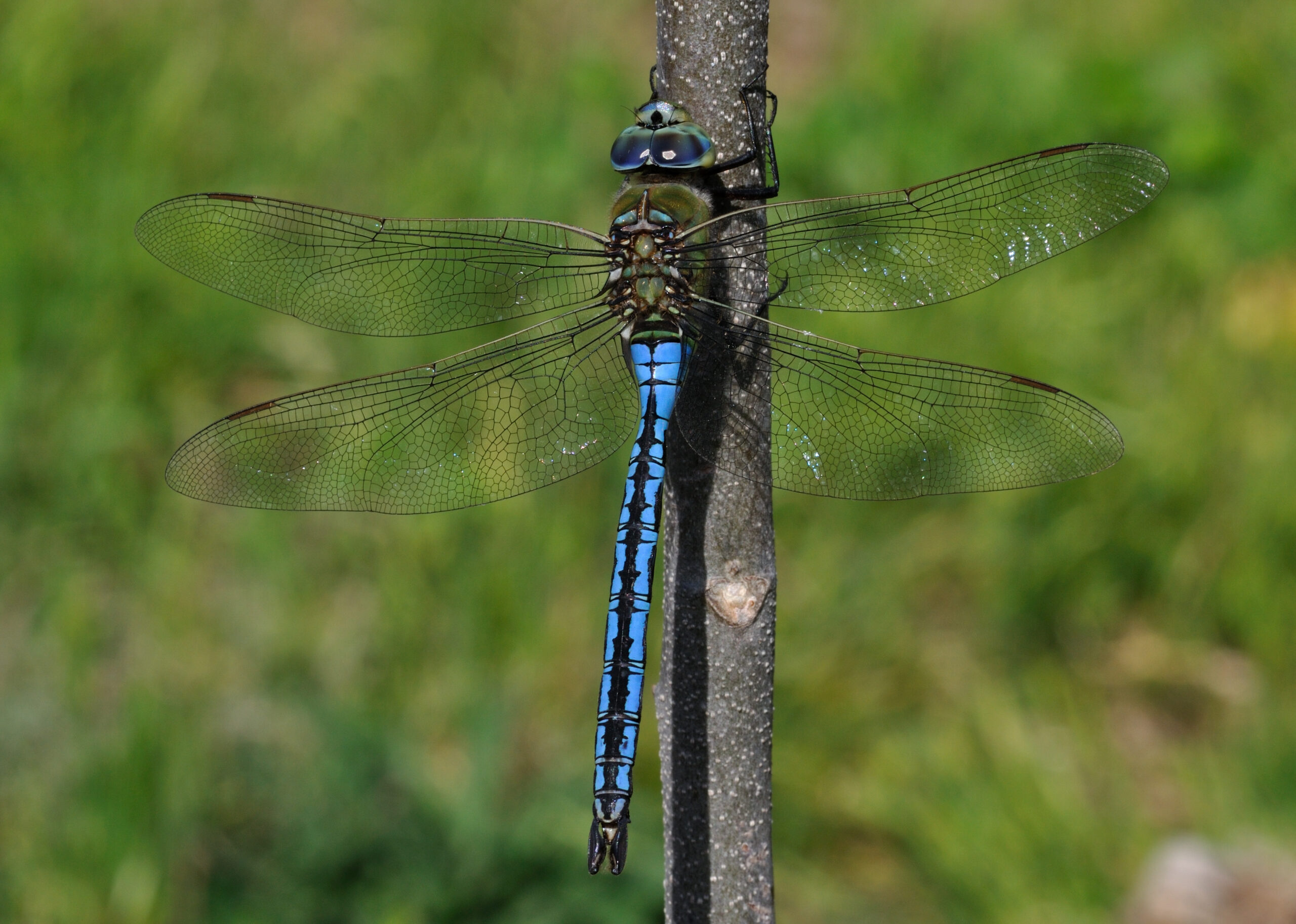
Male Blue Dashers undergo one of nature’s most dramatic makeovers as they mature from dull brown juveniles into gleaming azure warriors. Their bodies develop a powdery blue coating called pruinescence, which gives them an almost metallic sheen that catches sunlight like polished steel. This isn’t just for show—the blue coloration actually helps regulate their body temperature and serves as a visual signal to both rivals and potential mates.
Measuring between 1.5 to 2 inches in length, these dragonflies might seem small, but their compound eyes are absolute masterpieces of natural engineering. Each eye contains up to 30,000 individual lenses, giving them nearly 360-degree vision and the ability to detect movement from incredible distances. Their four wings operate independently, allowing them to hover, fly backward, and execute split-second maneuvers that would challenge the most advanced military aircraft.
Aerial Supremacy: The 95% Success Rate
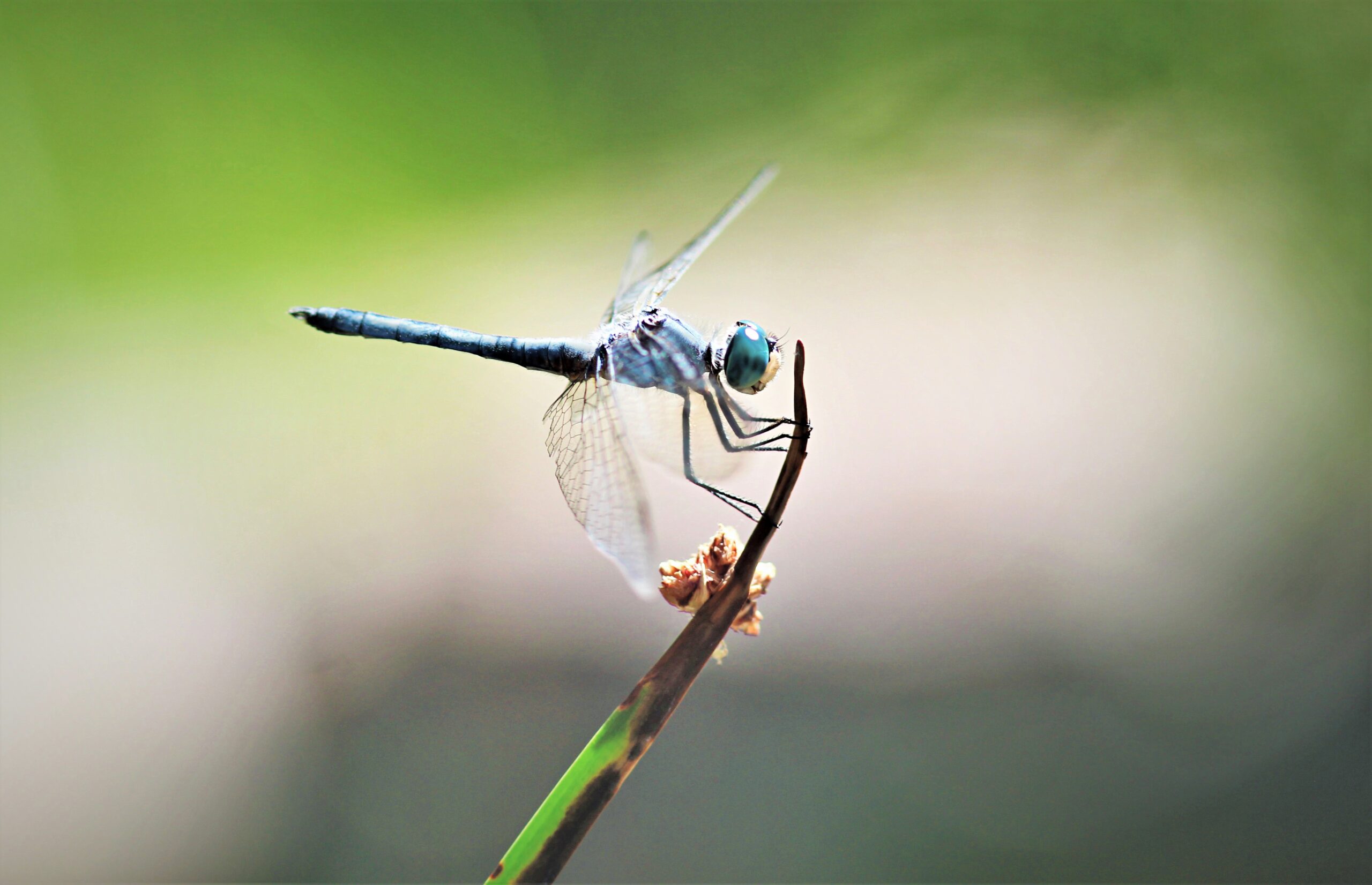
When it comes to hunting efficiency, Blue Dashers put every other predator to shame with their staggering 95% success rate. Lions, often called the kings of the jungle, only succeed in about 25% of their hunts, while these dragonflies rarely miss their target. They achieve this incredible success through a hunting technique called interception, where they calculate the future position of their prey and intercept it mid-flight.
Their brain processes visual information at lightning speed, allowing them to track multiple prey items simultaneously while maintaining perfect flight control. Scientists have discovered that Blue Dashers can identify and lock onto targets from over 40 feet away, adjusting their flight path in real-time to account for wind patterns and prey behavior. This level of precision has inspired engineers working on autonomous drone technology and military targeting systems.
The Preferred Hunting Grounds
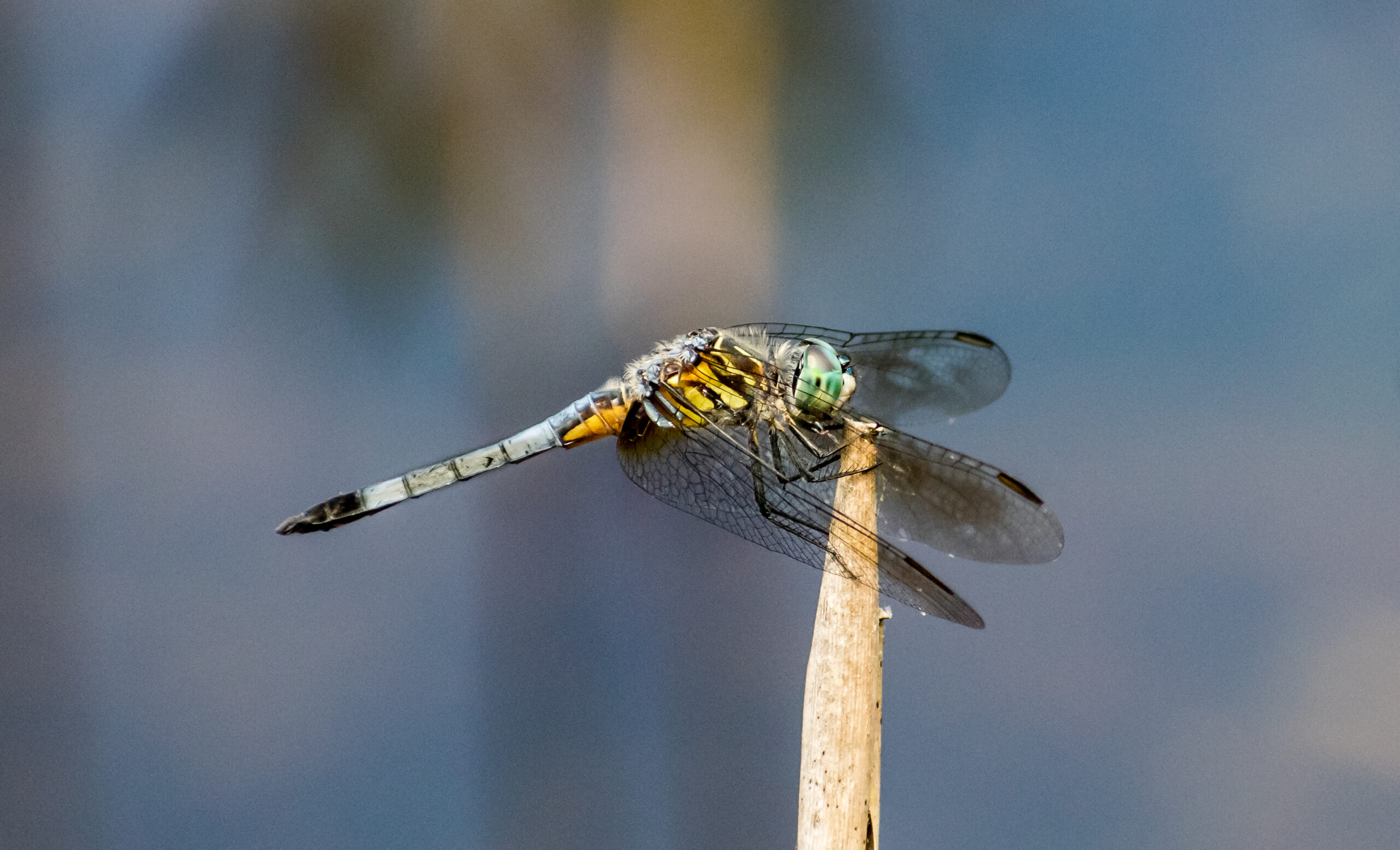
Blue Dashers are remarkably adaptable hunters, thriving in diverse aquatic environments across North America from southern Canada to northern South America. They show a particular preference for slow-moving or still waters like ponds, lakes, marshes, and even artificial water features in urban settings. These habitats provide the perfect combination of breeding grounds and hunting opportunities that Blue Dashers need to thrive.
Unlike many dragonfly species that require pristine wilderness areas, Blue Dashers have embraced human-modified landscapes with surprising enthusiasm. They’re commonly found patrolling suburban retention ponds, golf course water hazards, and even swimming pools. This adaptability has made them one of the most successful dragonfly species in North America, expanding their range as humans create new aquatic habitats.
Menu of Tiny Terrors
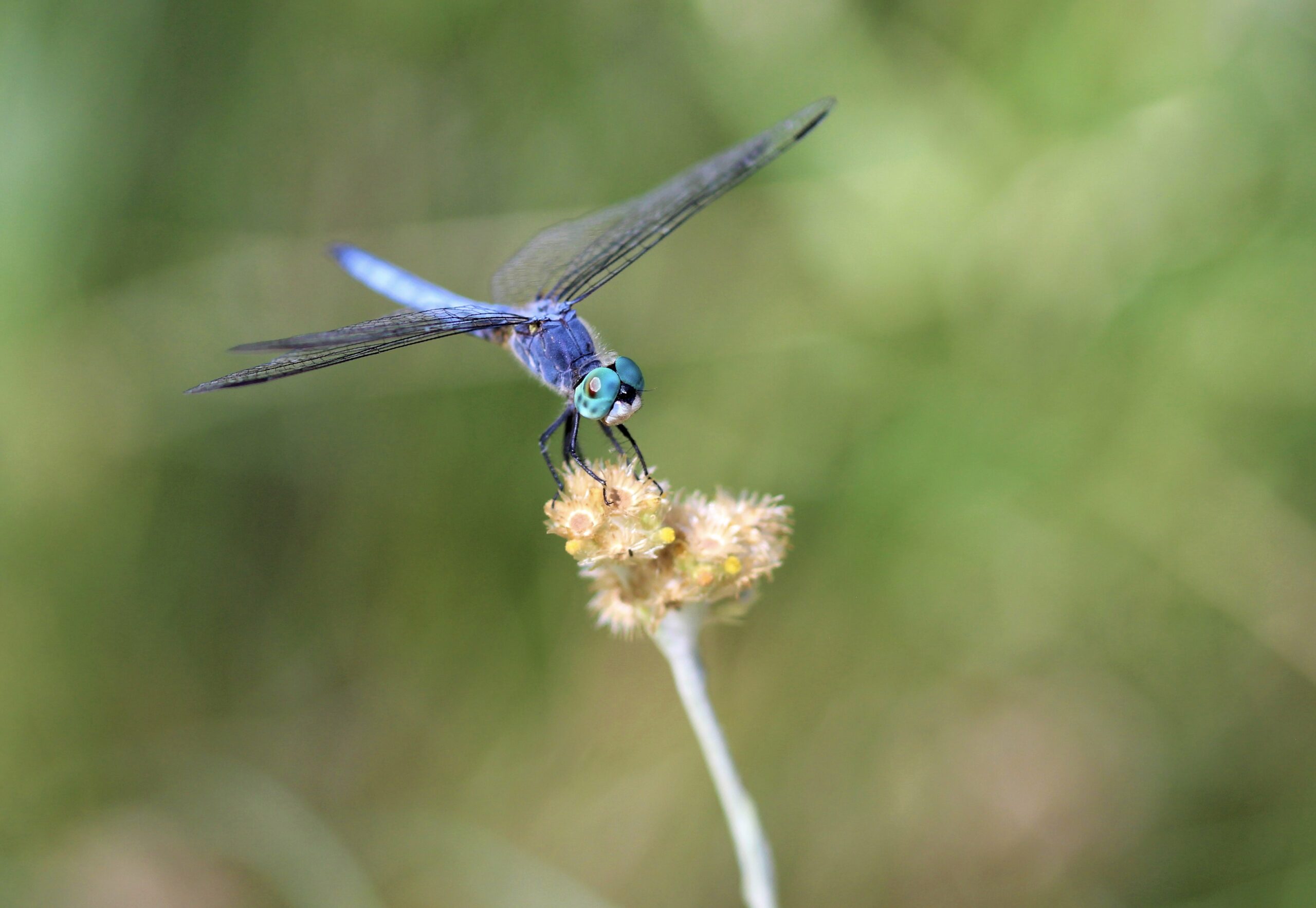
The Blue Dasher’s diet reads like a pest control company’s hit list, making them invaluable allies in the ongoing battle against annoying insects. Mosquitoes, flies, gnats, midges, and flying ants all feature prominently on their menu, with a single dragonfly capable of consuming hundreds of mosquitoes in a single day. They’re particularly effective at controlling mosquito populations because they hunt during peak mosquito activity periods.
What makes their feeding strategy even more impressive is their ability to size up prey instantly and adjust their attack accordingly. Smaller insects like gnats are snatched up in casual flyby attacks, while larger prey like horseflies require more aggressive pursuit tactics. They’ve even been observed taking on bees and wasps, though they typically avoid heavily armored insects unless food is scarce.
The Territorial Battles
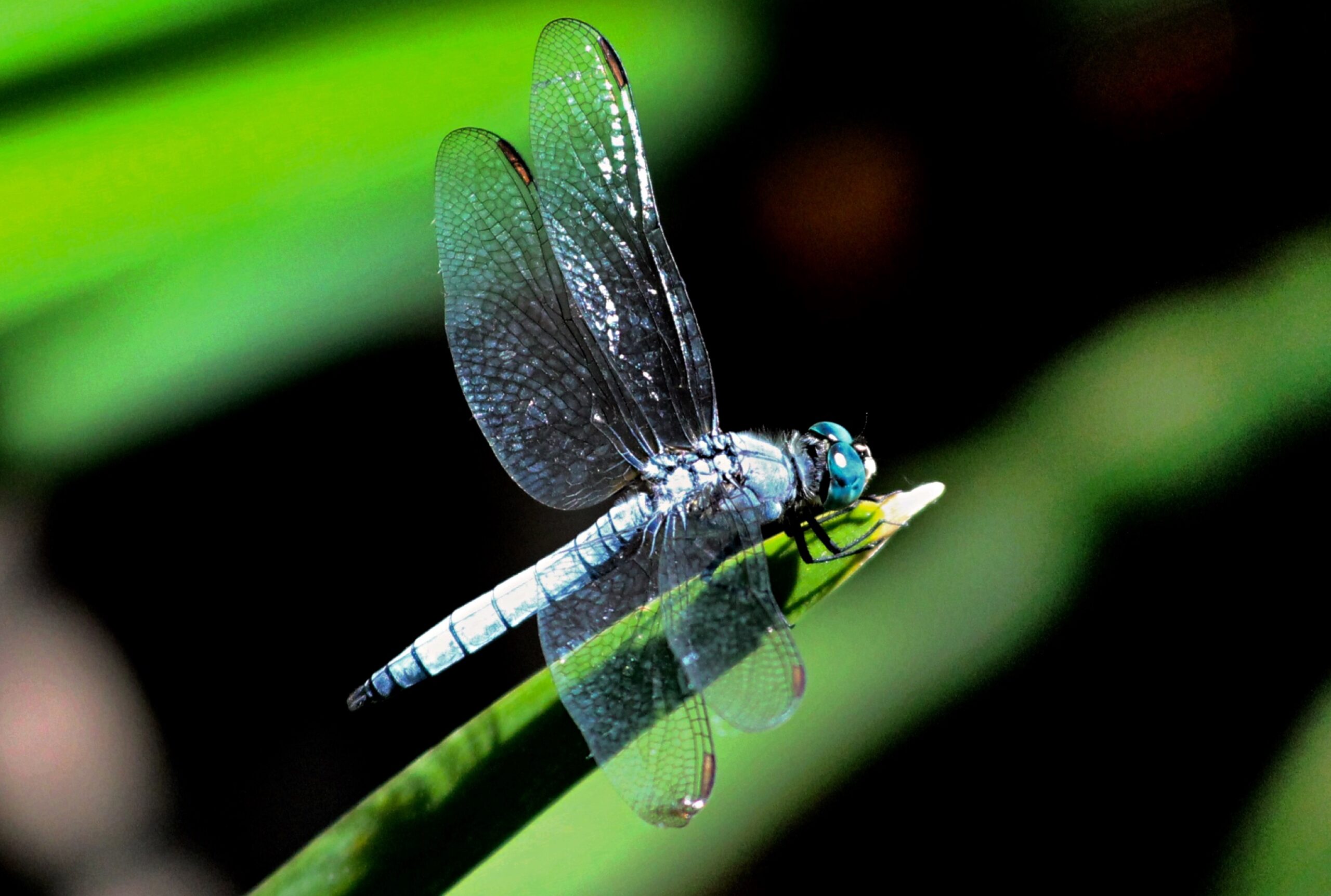
Male Blue Dashers are fierce territorial defenders, establishing and maintaining hunting territories that can span several hundred square feet of prime waterfront real estate. These territories aren’t just about food—they’re strategic positions that offer the best combination of hunting opportunities and access to egg-laying sites that will attract females. Males will aggressively chase away intruders, engaging in spectacular aerial dogfights that can last for minutes.
The intensity of these territorial disputes varies with population density and resource availability. In areas with abundant food and nesting sites, males may be more tolerant of neighbors, but in prime locations, battles can be brutal. Winners often patrol their territories from prominent perches like reed tips or overhanging branches, scanning for both prey and potential challengers with constant vigilance.
The Mating Dance
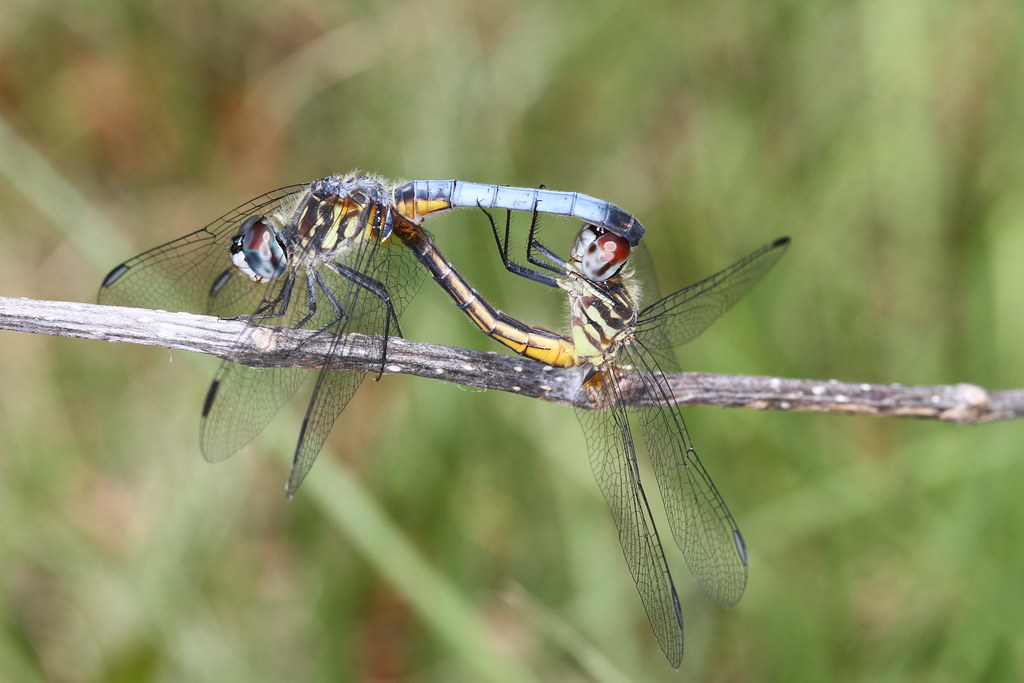
Blue Dasher courtship is a complex affair that combines aerial acrobatics with subtle chemical communication. Males attract females not just through their striking blue coloration, but also through pheromones and elaborate flight displays that demonstrate their fitness and territory quality. Successful males often control the choicest egg-laying sites, which gives them a significant advantage in attracting mates.
The actual mating process involves a unique position called the “wheel” where the male grasps the female behind her head while she curves her abdomen forward to receive sperm. This coupling can last anywhere from a few seconds to several minutes, during which time the pair may continue flying in tandem. After mating, males often guard females during egg-laying to prevent other males from interfering.
The Incredible Life Cycle
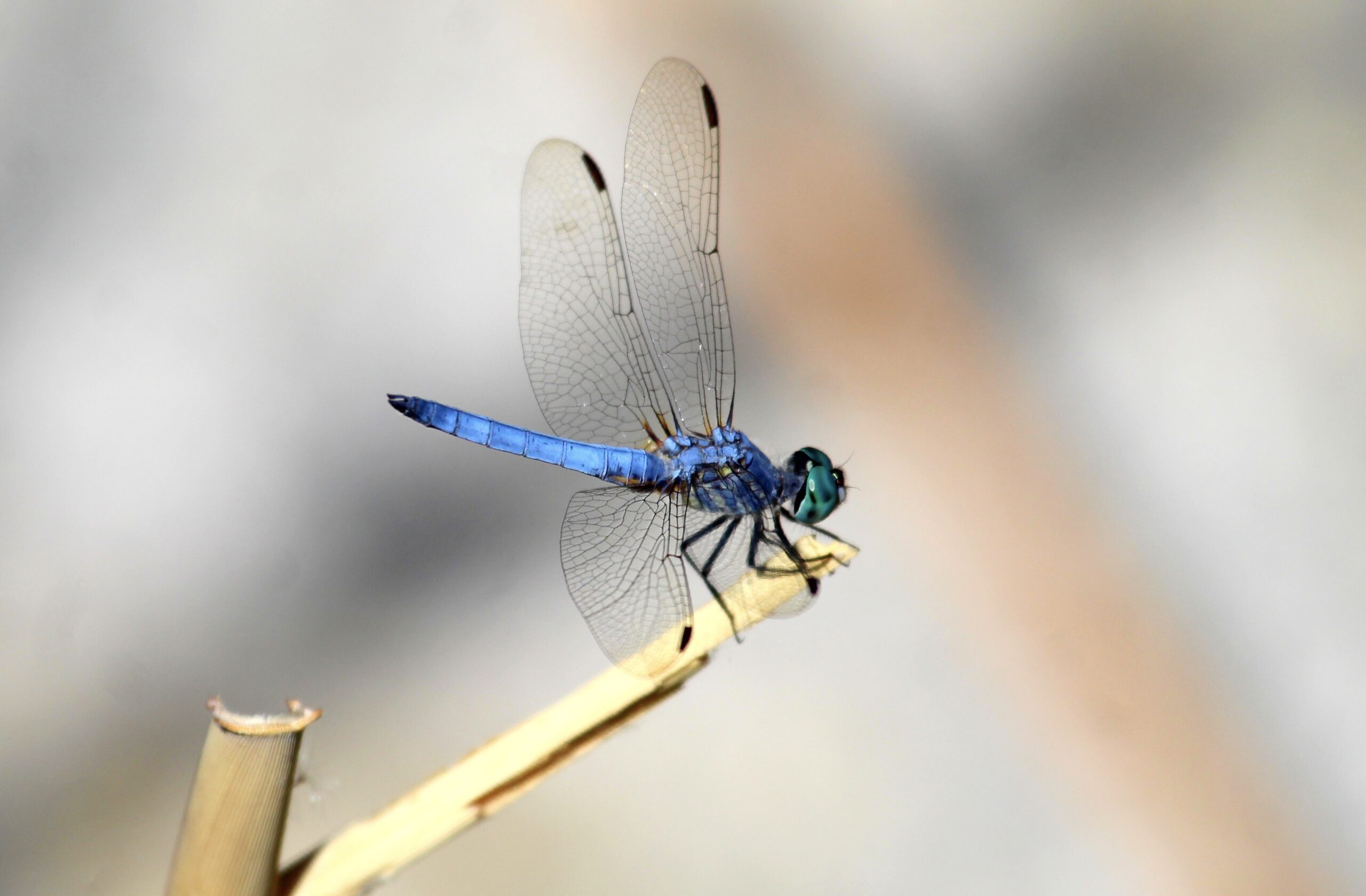
The Blue Dasher’s life cycle is a testament to nature’s ingenuity, involving a complete metamorphosis that spans aquatic and terrestrial environments. Females deposit their eggs directly into the water or on floating vegetation, where they develop into aquatic nymphs that bear little resemblance to their adult form. These nymphs are voracious predators in their own right, feeding on mosquito larvae, small fish, and other aquatic insects.
The nymphal stage can last anywhere from one to three years, depending on climate and food availability. During this time, they molt multiple times, growing larger and more formidable with each shed skin. When ready to transform, nymphs crawl out of the water onto emergent vegetation or rocks, where they undergo their final molt and emerge as winged adults in a process that takes several hours.
Speed Demons of the Insect World

Blue Dashers are among the fastest insects on Earth, capable of reaching speeds of up to 35 miles per hour in short bursts. Their four wings beat at different frequencies and can operate independently, giving them unmatched maneuverability that allows them to outfly virtually any aerial predator. This speed isn’t just for hunting—it’s also crucial for escaping birds, bats, and other creatures that view dragonflies as a tasty meal.
What’s truly remarkable is their ability to instantly change direction without losing momentum, a feat that requires incredible coordination between their wings, vision, and nervous system. They can accelerate from a complete stop to full speed in milliseconds, making them nearly impossible to catch for most predators. This agility has made them a subject of intense study for robotics engineers trying to develop more maneuverable flying machines.
Ancient Survivors
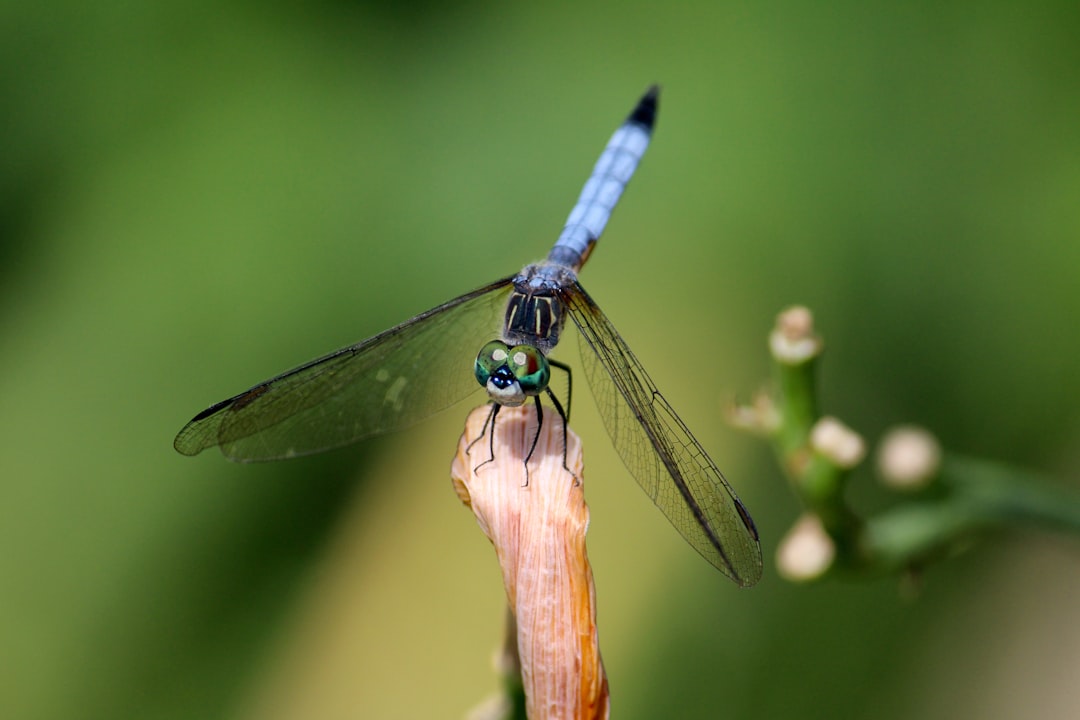
Blue Dashers belong to one of the most ancient insect orders on Earth, with fossil evidence showing that dragonflies were already well-established 300 million years ago. Their ancestors were giants compared to modern species, with some prehistoric dragonflies boasting wingspans of over two feet. These ancient hunters dominated the skies long before birds or bats evolved, making them true pioneers of powered flight.
The basic dragonfly body plan has remained remarkably unchanged throughout geological time, suggesting that evolution perfected this design early and saw little need for major modifications. Modern Blue Dashers share fundamental characteristics with their Paleozoic ancestors, including the same hunting strategies, flight mechanics, and life cycle patterns that have proven successful across hundreds of millions of years.
Ecosystem Engineers

Blue Dashers play a crucial role as both predators and prey in freshwater ecosystems, helping to maintain the delicate balance that keeps these environments healthy. As nymphs, they control populations of mosquito larvae and other aquatic pests while serving as food for fish, frogs, and aquatic birds. As adults, they continue this dual role, hunting aerial insects while providing nutrition for birds, spiders, and bats.
Their presence often indicates a healthy aquatic ecosystem, as they require clean water for successful reproduction and abundant prey populations to sustain their energy-intensive lifestyle. Environmental scientists sometimes use dragonfly populations as indicators of ecosystem health, since these insects are sensitive to pollution and habitat degradation. A thriving Blue Dasher population usually means the local environment is in good condition.
Masters of Temperature Control
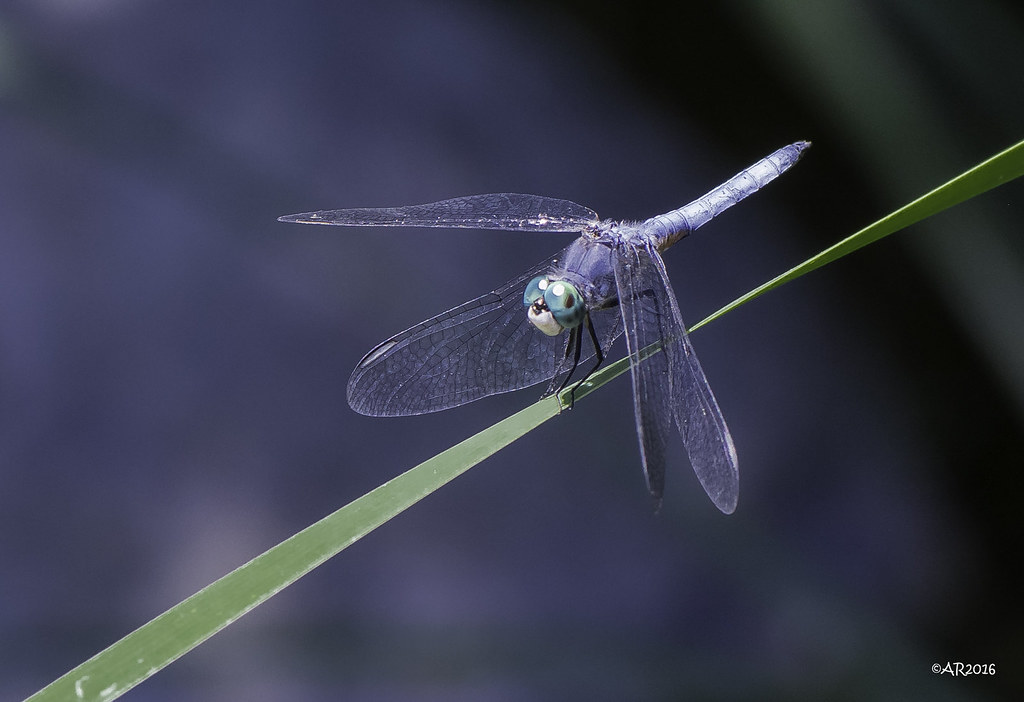
Blue Dashers have evolved sophisticated mechanisms for regulating their body temperature, allowing them to remain active across a wide range of environmental conditions. They can adjust their metabolic rate and use behavioral thermoregulation techniques like basking in sunlight or seeking shade to maintain optimal operating temperatures. This adaptability extends their active hunting season and geographic range compared to more temperature-sensitive species.
During hot weather, they position their bodies to minimize sun exposure and may even seek out cooler microclimates near water surfaces. In cooler conditions, they orient themselves to maximize solar heating and may vibrate their flight muscles to generate internal heat. This thermal flexibility allows them to hunt effectively from early morning through late evening, maximizing their feeding opportunities.
Communication Without Words
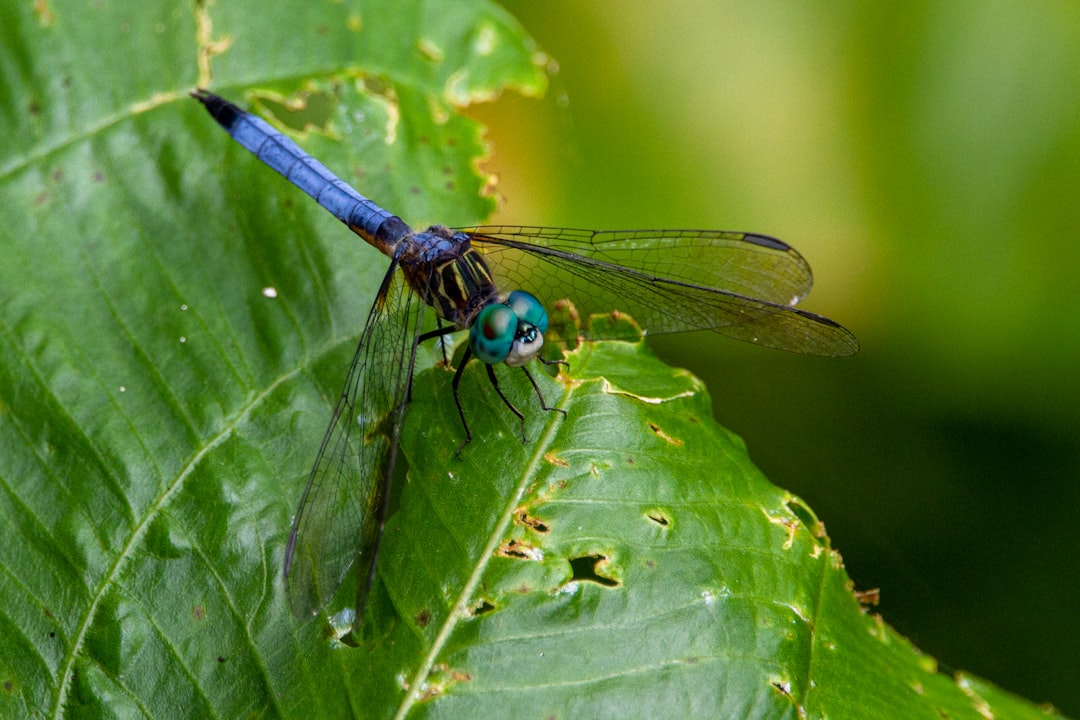
While Blue Dashers don’t produce sounds like crickets or cicadas, they communicate through a complex array of visual signals, chemical cues, and flight patterns. Males use specific wing positions and flight trajectories to signal territorial ownership, while females communicate their receptiveness to mating through subtle changes in flight behavior and body positioning. These silent conversations are constantly taking place in the airspace above ponds and lakes.
Color changes also play a role in dragonfly communication, with males becoming more intensely blue when excited or threatened. Territorial displays often involve rapid flight patterns that showcase the male’s speed and agility while warning competitors to stay away. Even the angle at which they hold their wings while perched can convey information about their intentions and emotional state.
Urban Adaptation Success Story
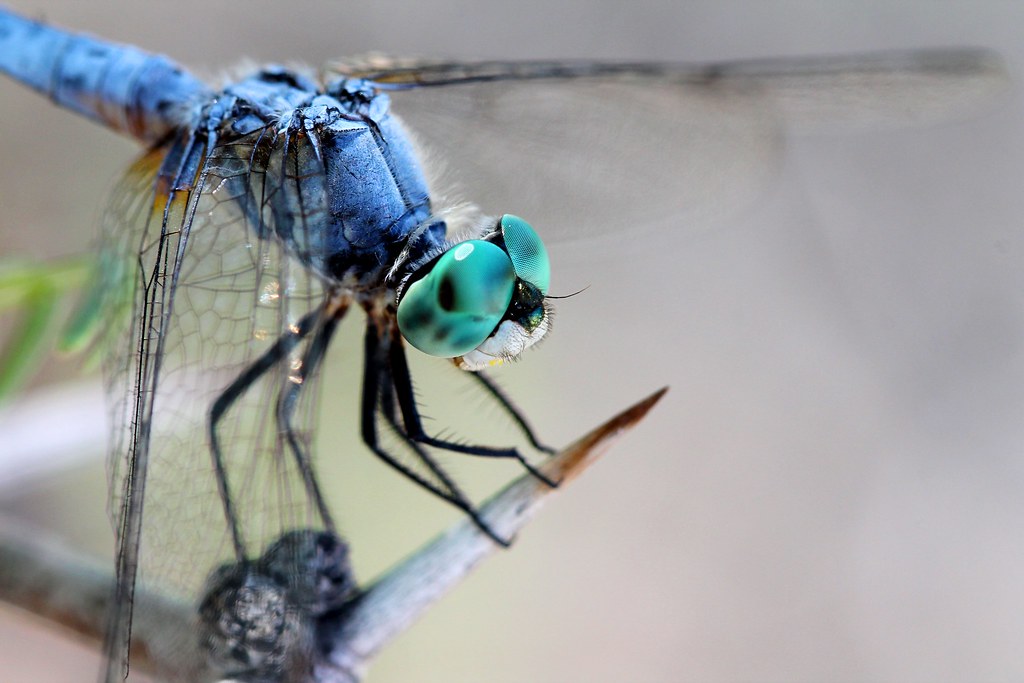
Blue Dashers have shown remarkable adaptability to human-altered landscapes, thriving in urban and suburban environments where many other dragonfly species struggle. They’ve learned to exploit artificial water features like storm retention ponds, decorative fountains, and even large puddles as breeding sites. This flexibility has allowed them to expand their range and maintain stable populations despite widespread habitat modification.
Their success in urban environments also benefits human communities by providing natural pest control services. A single Blue Dasher patrolling a backyard can significantly reduce mosquito populations, making outdoor activities more enjoyable for families. Homeowners who maintain ponds or water gardens often report dramatic decreases in flying pest populations when Blue Dashers take up residence.
Conservation Champions
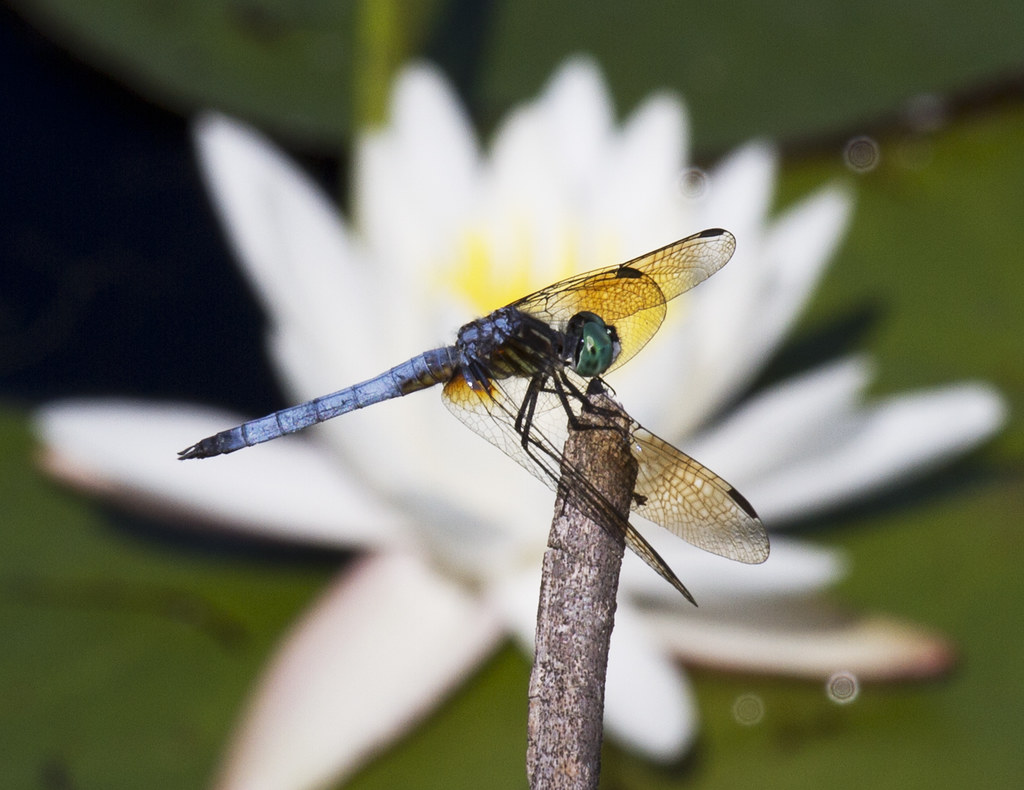
While Blue Dashers are currently abundant across most of their range, their continued success depends on maintaining healthy aquatic ecosystems and protecting wetland habitats from pollution and development. Climate change poses potential challenges as shifting weather patterns could affect their breeding cycles and prey availability. However, their adaptability suggests they may be better positioned than many species to cope with environmental changes.
Conservation efforts focused on protecting and restoring wetlands benefit not only Blue Dashers but entire aquatic communities. Simple actions like avoiding pesticide use near water bodies, supporting wetland conservation initiatives, and creating backyard water features can help ensure these remarkable hunters continue to patrol American skies. Their presence serves as a living reminder of the incredible diversity and resilience of life that exists in our local ecosystems.
Conclusion: The Living Jewels Among Us
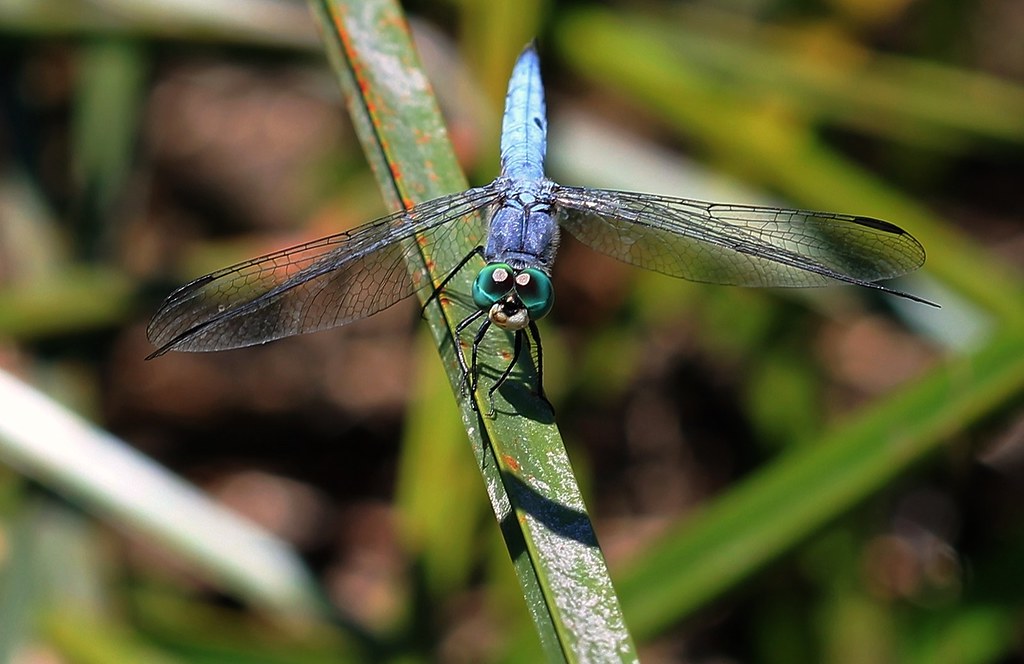
The Blue Dasher dragonfly represents one of nature’s most perfect predators, combining ancient wisdom with modern adaptability in a package that’s as beautiful as it is deadly efficient. These metallic-blue hunters have mastered the art of aerial warfare through millions of years of evolution, achieving success rates that shame every other predator on Earth. Their ability to thrive in both pristine wilderness and human-modified landscapes speaks to an evolutionary flexibility that will likely serve them well in an uncertain future.
Next time you see a flash of blue darting over a pond or lake, take a moment to appreciate the incredible engineering marvel you’re witnessing. These living jewels carry the legacy of 300 million years of evolutionary refinement, yet they’re perfectly at home in our modern world. What could be more inspiring than a creature that’s both ancient and contemporary, beautiful and deadly, familiar yet mysterious?

